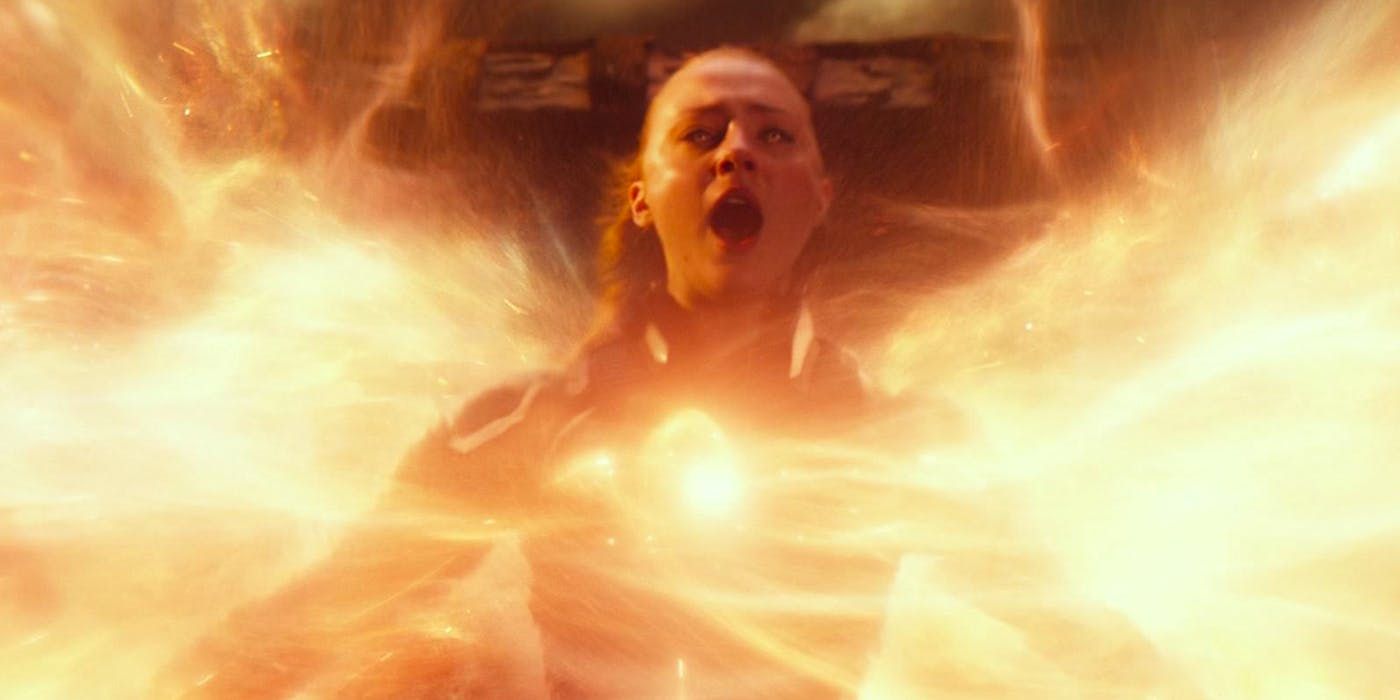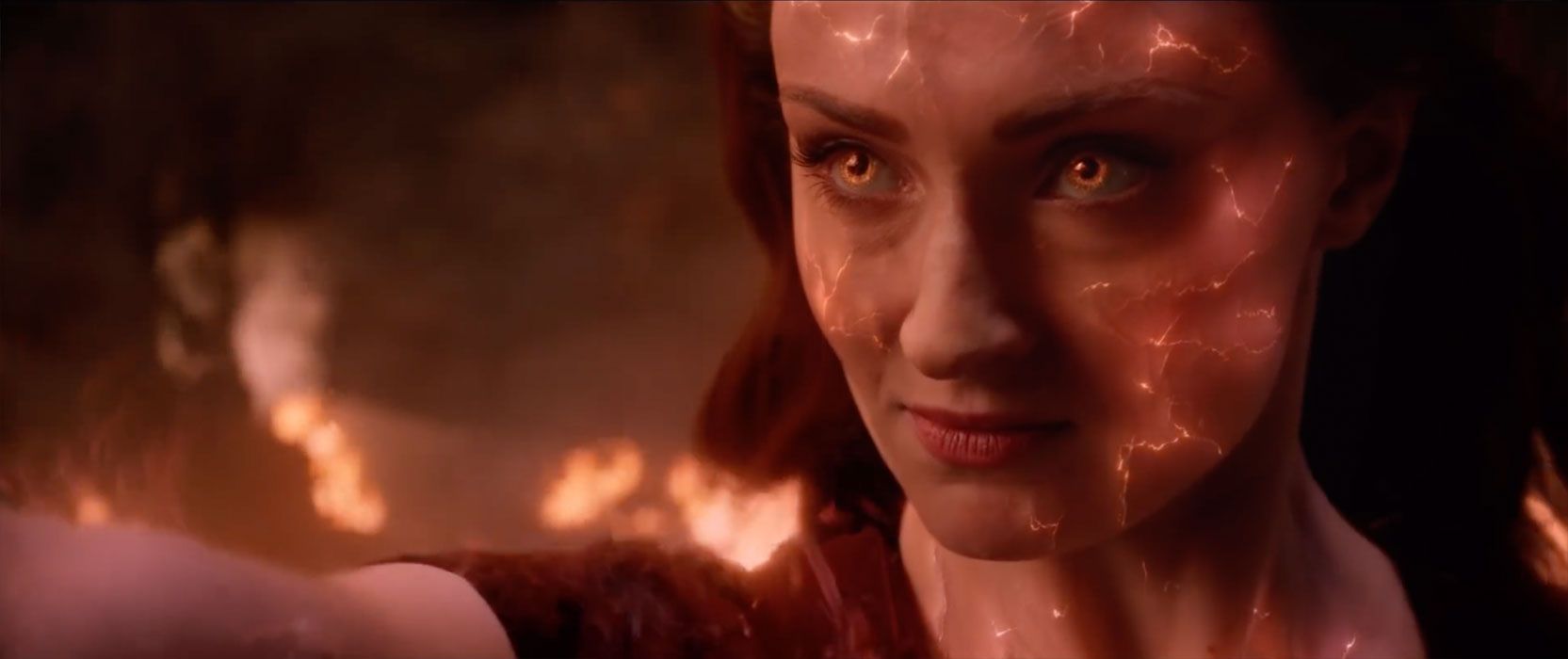WARNING: The following article contains spoilers for Dark Phoenix, in theaters now.
Dark Phoenix stays relatively true to the source material at its start. Jean Grey joins the X-Men on a desperate rescue mission into outer space. While off-world, the young superhero bonds with a mysterious cosmic entity known as the Phoenix Force, dramatically amplifying her telekinetic and telepathic powers, but at the increasing risk of losing control... with destructive consequences. However, while this does reflect how the Phoenix Force first appears in the comics, setting both stories in motion, the plot point also directly contradicts Jean's previous cinematic depiction in 2016's X-Men: Apocalypse.
Taking place approximately a decade before the events of Dark Phoenix, the earlier film had Jean constantly at war with her own dark potential as a nod to her malevolent other half, fully revealed in 2006's X-Men: The Last Stand. Just as with the third X-Men film, Professor Charles Xavier closely monitors Jean to help her cope with her abilities and inner darkness.
Over the course of Apocalypse, it was implied that Charles had set telepathic limits on Jean's abilities to prevent her from being consumed by her villainous persona, only for the venerable professor to finally convince Jean to embrace her full potential at the film's climactic battle against Apocalypse.
Arriving with the rest of the X-Men in Cairo to rescue Professor X from Apocalypse and prevent him from triggering a nuclear Armageddon, Jean initially takes a restrained role in the final battle, leaving her teammates to confront Apocalypse physically while Professor X faces the villain on the astral plane. However, as Apocalypse begins to overwhelm Professor X and the rest of the team, the X-Men founder calls to Jean to finally embrace her true potential and destroy Apocalypse with her latent telekinetic power.
Letting go of her fears and unleashing her full power, Jean obliterates Apocalypse on the astral plane before confronting him physically. Jean single-handedly turns the tide of battle against the omnipotent villain and completely disintegrates him as the fiery shape of the Phoenix forms around her.
Providing a more hopeful incarnation of the Phoenix than first seen in The Last Stand, it appears that Jean has channeled her potential without losing herself, but this opens broader questions about what the exact role of the Phoenix Force in Dark Phoenix really is.
Virtually every incarnation of Jean Grey, both in the comic books and various media adaptations, have played on the concept of the full extent of her powers being repressed for fear that she would lose control and become an outright villain. However, the fiery nature of Jean's unleashed potential and its ability to disintegrate its targets is never fully explained in Apocalypse; they certainly don't appear to be a natural result of her telekinesis.
More confusing is the appearance of the Phoenix symbol engulfing Jean as she unlocks her latent abilities during the 2016 film's final showdown. Both the symbol and the fire element did not become associated with the character in the comics until Jean's encounter with the cosmic Phoenix Force, making them especially puzzling here.
With Simon Kinberg replacing Bryan Singer as director on Dark Phoenix, the retconned origin of Jean's Phoenix persona and augmented powers likely reflect a couple different factors. First, the creative shakeup behind the scenes allowed Kinberg to tell the story he wanted to tell all along, hewing closer to how the story played out in the comic books, albeit with considerable creative liberties, as seen in virtually every single installment of Fox's X-Men films.
Second, it is a clear move to distance this latest film further from X-Men: Apocalypse, an installment which had struggled to connect with audiences and critics alike upon its initial release. Aside from the returning younger generation of X-Men, the new origin of Jean's connection with the Phoenix Force effectively pretends like much of the events of the lambasted previous film didn't happen.
Just as X-Men: The Last Stand had brought about the end of the original X-Men trilogy in 2006, Dark Phoenix ends not only the First Class era of the cinematic franchise that began in 2011, but Fox's tenure with the property as a whole. However, in an effort to stay true to the comic book source material and distance itself from the poorly received X-Men: Apocalypse, the film has continued to deviate from its own established continuity to create an independent take of the "Dark Phoenix Saga," complete with cosmic origins rather than repressed personalities.
It's confusing for those expecting a familiar take on Jean Grey and the Phoenix, but audiences will have to just forget what they knew about the character's fiery beginnings as they watch Marvel's Merry Mutants go on one last ride in Dark Phoenix.
Directed and written by Simon Kinberg, Dark Phoenix stars James McAvoy, Michael Fassbender, Jennifer Lawrence, Nicholas Hoult, Sophie Turner, Tye Sheridan, Alexandra Shipp, Kodi Smit-McPhee, Evan Peters and Jessica Chastain.


